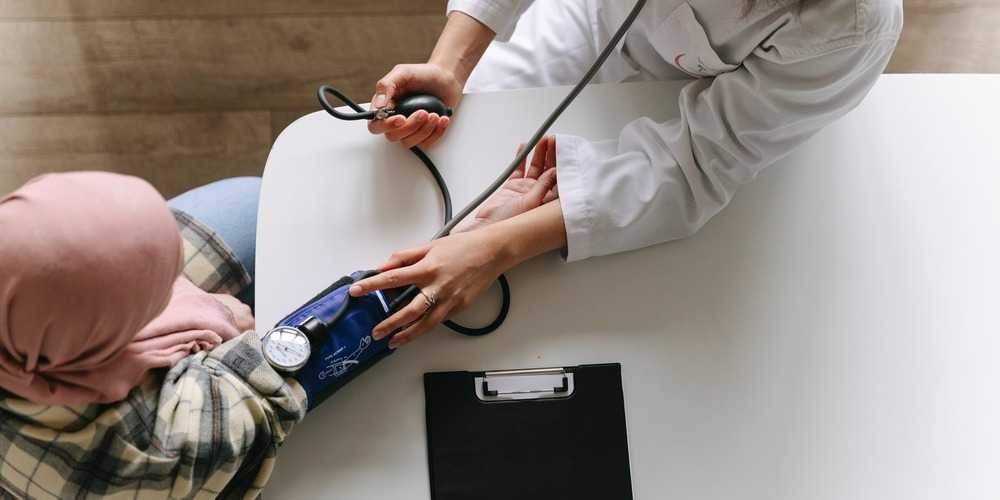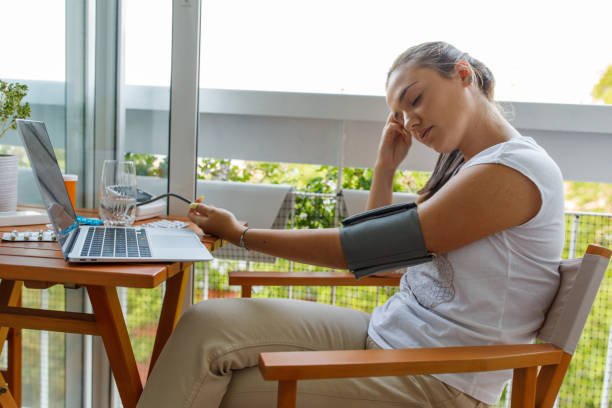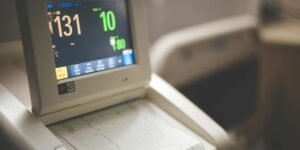
What to Do if You Have Low Blood Pressure? Understand the Causes, Standards, Symptoms and Treatment of Hypotension
As long as blood pressure is mentioned, most people think of the harm caused by high blood pressure. In fact, low blood pressure can also cause a lot of harm to the body, such as dizziness and cold limbs. In severe cases, there may be a risk of syncope or death. It must not be ignored. Let this article explain to you the symptoms of hypotension and how to deal with it when you encounter it.
How much is hypotension? Criteria for hypotension
The general standard of normal blood pressure is 120/80mmHg, and any higher is close to “prehypertension”. Hypotension means that the blood pressure drops to <90/60mmHg, that is, systolic blood pressure (the highest blood pressure) is <90mmHg, and diastolic blood pressure (the lowest blood pressure) )<60mmHg.
Hypotension is a symptom of many diseases and can affect personal health, especially in the elderly. However, low blood pressure can usually be improved by regular exercise, avoiding standing for long periods of time, and avoiding sudden rising from a lying or sitting position, also known as postural hypotension.
How common is hypotension?
Anyone can have low blood pressure, but it is especially common in the elderly, pregnant women, and healthy people who exercise regularly. Most patients with hypotension have mild symptoms that can be improved by adjusting their lifestyle or habits.
Symptoms of low blood pressure
When blood flow to the brain is reduced, hypotension occurs. Common symptoms may be as follows. Symptoms vary from person to person. If you have other abnormal symptoms, please consult your doctor.
- Feeling light-headed or dizzy
- Fainting, fainting
- decreased concentration
- blurred vision
- nausea
- clammy skin
- Shortness of breath, shortness of breath
- tired
- Thirsty

When should you seek medical advice?
If you have low blood pressure for a long time but do not experience any symptoms, it usually means that your body is fine. For example, many healthy people who have exercise habits usually have lower blood pressure than ordinary people. Even if you have mild dizziness symptoms, as long as it does not affect your daily life, there is no need to worry too much. However, you can still seek medical examination to confirm whether there are other hidden diseases in your body. However, if you experience the following symptoms of low blood pressure, you need to seek medical attention as soon as possible:
- Feeling light-headed or dizzy, and feeling like you will pass out if you stand for more than 5 seconds.
- Palpitations
- Pale skin and feeling cold.
- Breathing becomes shallow and rapid.
- Confusion (more common in the elderly).

Causes of hypotension
Many factors can cause blood pressure to change, including body posture, stress, medications, diet, time of day, etc. In addition, hypotension can also be caused by:
- Pregnancy:
Increased blood circulation in pregnant women, coupled with hormonal changes, may cause hypotension in pregnant women. - Dehydration:
Dehydration may cause low blood pressure by causing a lack of fluid in the arteries. Causes of dehydration include insufficient fluid intake, severe vomiting or diarrhea, and excessive sweating, such as after strenuous exercise. - Lack of nutrition:
The body’s lack of vitamin B12, folic acid, and iron will affect the production of red blood cells, leading to lower blood pressure. - Severe allergic reactions:
Certain drugs, foods, insect venoms or other substances may cause severe allergies in those who come into contact with them, and hypotension is one of the possible allergic symptoms. - Blood loss:
Extensive blood loss (internal bleeding or trauma) can cause a rapid decrease in blood volume, causing hypotension. - Medications:
Some medications may lower blood pressure, such as diuretics, beta-blockers, nitroglycerin medications, Parkinson’s disease medications, antidepressants, and erectile dysfunction medications. - Other diseases:
Septic shock caused by sepsis. - Endocrine problems:
Parathyroid disease, Addison’s disease, hypoglycemia, diabetes. - Heart problems:
Bradycardia, heart valve disease, and heart failure can all cause low blood pressure.
Types of hypotension
Do you remember the “postural hypotension” mentioned earlier in the article? Including it, hypotension can actually be divided into the following two types:
- Postural hypotension:
Also known as orthostatic hypotension or postural hypotension. Hypotension symptoms caused by body posture changes usually occur when standing up after sitting for a long time, or when changing from lying down to standing. Symptoms will generally improve after taking a rest. The elderly are prone to postural hypotension because their ability to regulate blood pressure deteriorates. - Postprandial hypotension:
Within 1 to 2 hours after eating, blood will be concentrated in the stomach to facilitate digestion of food. At this time, if blood vessels in other parts of the body do not contract appropriately, postprandial hypotension may occur. This symptom is also more likely to occur in the elderly. However, taking high blood pressure drugs and Parkinson’s disease drugs may also increase the risk of attacks.
Groups prone to hypotension
Although there are many causes of hypotension, the following are particularly common:
- Elderly people:
Elderly people over 65 years old are particularly prone to postprandial and postural hypotension. - High blood pressure medications:
Taking high blood pressure medications such as diuretics, nitrate medications, or vasodilators increases the risk of hypotension. - Disease:
People with Parkinson’s disease, diabetes, or heart disease are at higher risk for hypotensive episodes.

Diagnosis and treatment of hypotension
If you suspect that you are feeling unwell due to blood pressure, go to the hospital for examination. The medical staff will do some tests for you to confirm whether the cause is hypotension. The diagnostic methods include the following:
- Take blood pressure:
Measure blood pressure and pulse while the patient is sitting or lying down, then measure again when the patient stands up. - Blood test:
Draw blood to check the number of red blood cells and blood sugar levels to determine whether the cause of hypotension is anemia or abnormal blood sugar. - Electrocardiography (ECG):
Tests the health of the heart and helps determine whether low blood pressure is related to heart disease. - Inclined bed test:
By asking the patient to lie on an inclined bed and then stand up on the bed, the patient’s blood pressure changes are detected as the patient’s posture changes.
Drug treatment options for hypotension
Mild dizziness or asymptomatic hypotension usually does not require treatment. However, if the patient’s hypotension is caused by drugs or other diseases, the doctor will choose an appropriate treatment based on the cause of the hypotension.
Hypotension treatments include mineral corticosteroids, such as fludrocortisone, which are commonly used to treat postural hypotension, or sympathomimetic drugs, such as Midodrine, which inhibit vasodilation. to improve symptoms of hypotension.
Lifestyle adjustments for hypotension
In addition to drug treatment, patients with hypotension also need to change their lifestyle to effectively reduce the frequency of hypotension:
- Drink more water:
increase blood volume and avoid hypotension caused by dehydration, especially in hot weather. - Get up slowly:
Don’t move too quickly when you stand up to give your body time to adjust, especially when you first wake up. It is recommended that when you get up in the morning, you can sit for a while, then slowly put your legs along the edge of the bed, and continue to sit for a while. When preparing to stand up, hold on to something stable to avoid sudden dizziness. - Methods to promote blood return:
If you suddenly feel low blood pressure while standing, you can try to cross your thighs (in a scissor shape) and clamp them, or put one of your feet on a window sill or chair, and then Let the entire body tilt toward the raised foot. Both of these methods will help return blood from the lower body to the heart. - Avoid alcohol:
Alcohol can worsen dehydration symptoms. - Continued exercise:
Exercise can help improve postural hypotension, but avoid exercising in extremely hot, humid weather or environments. - The bath water temperature is not too hot:
Bath water temperature that is too high will dilate blood vessels and increase the risk of hypotension. - Increase salt intake:
For people with low blood pressure, eating salty foods can increase sodium intake and help increase blood pressure. However, excessive intake may also cause danger, so it is recommended to consult a doctor before considering implementation.













